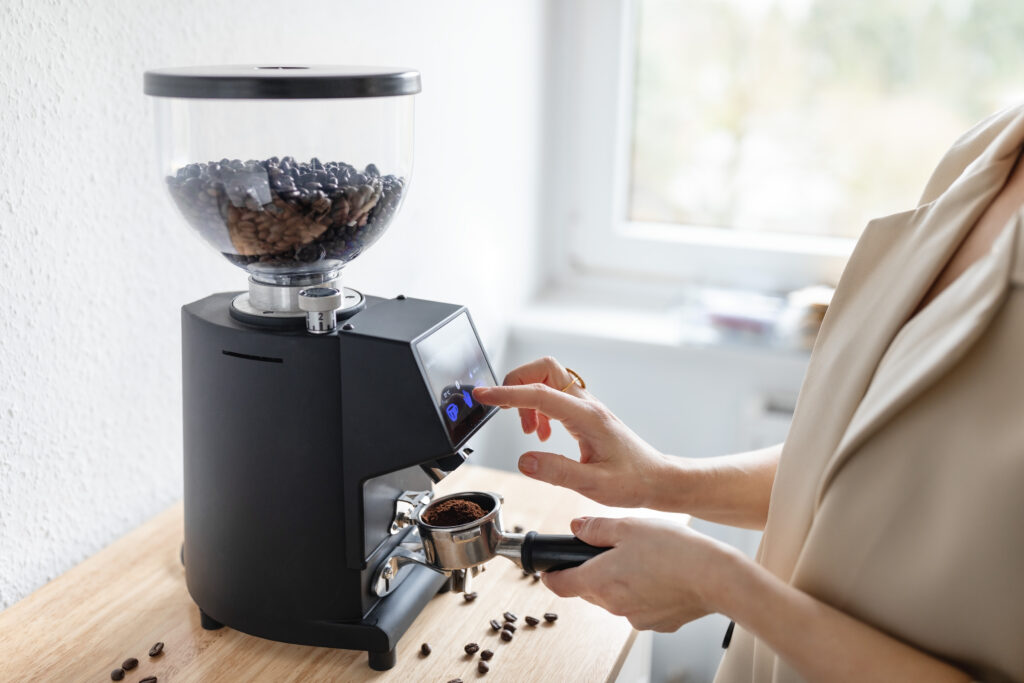
Table of Contents
The secret to an exceptional cup of coffee starts long before the first sip—it begins with the grind. Understanding the different coffee grinder types is essential if you’re serious about elevating your coffee experience. Whether you’re brewing a bold espresso, a smooth pour-over, or a robust French press, the grinder you use is critical in unlocking your coffee beans’ full potential.
Think of it this way the grind determines how your coffee interacts with water, directly impacting flavor, aroma, and consistency. A poorly matched grinder can leave your brew tasting dull or bitter, but the right one can transform your mornings into a café-quality experience. From the speed and simplicity of blade grinders to the precision and consistency of burr grinders, every coffee grinder has its strengths. There’s even something special about the hands-on charm of manual grinders for those who savor the process.
In this guide, you’ll uncover the pros, cons, and best uses for each grinder type. By the end, you’ll have the knowledge to choose the perfect grinder for your brewing method and taste preferences. Get ready to revolutionize your coffee ritual—because great coffee begins with the perfect grind.
Why Does Grinder Type Matter?
Before exploring the different types of coffee grinders, it’s essential to understand why coffee grinder types matter. Coffee beans release their full flavor potential when ground to the appropriate size and consistency. The wrong grinder can result in uneven grounds, leading to inconsistent extraction and a subpar cup of coffee. Investing in the right grinder ensures that your coffee retains its natural oils and flavors, providing you with a rich and satisfying brew.
Different Coffee Grinder Types:
1) Blade Grinders:
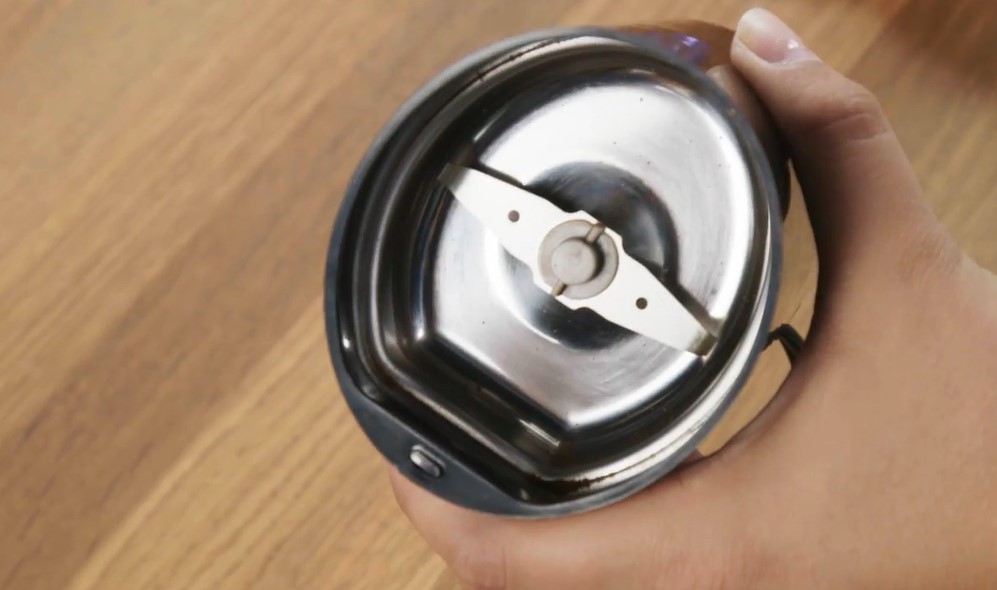
Blade grinders are one of the most common and affordable types of coffee grinder types available. They operate with a simple mechanism: a rotating blade chops the coffee beans into smaller pieces.
Pros:
- Affordable: Blade grinders are budget-friendly, making them ideal for beginners or casual coffee drinkers.
- Easy to Use: Their straightforward design makes them user-friendly and easy to operate.
- Compact: These grinders are often small and lightweight, perfect for those with limited kitchen space.
Cons:
- Inconsistent Grind: Blade grinders tend to produce uneven coffee grounds, which can lead to inconsistent brewing.
- Heat Generation: The high-speed blades can generate heat, potentially affecting the coffee’s flavor by burning the beans.
Best For: Blade grinders are suitable for drip coffee makers or French presses, where precise grind size is less critical.
2) Burr Grinders:
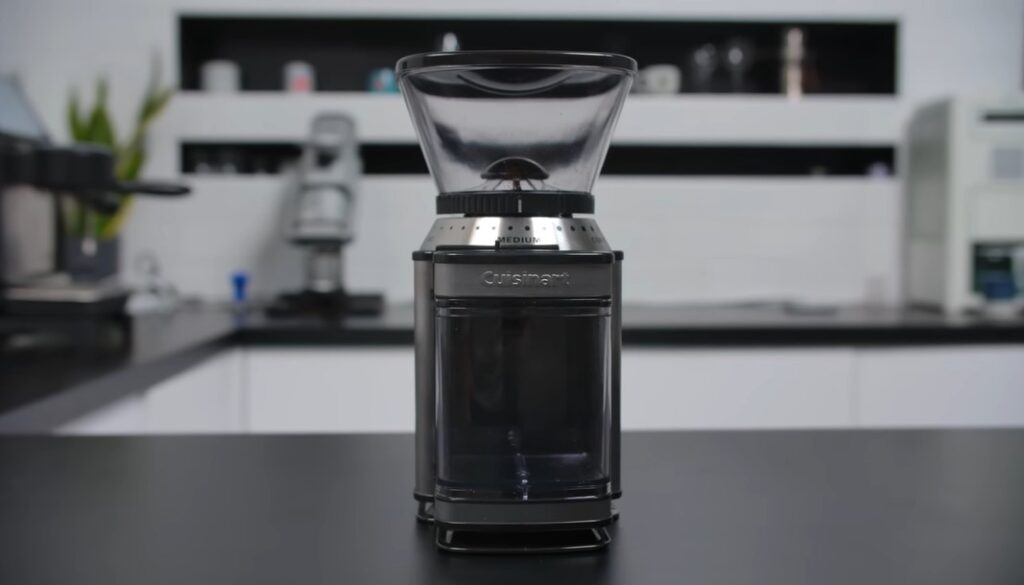
For coffee lovers, burr grinders are the best option. They grind coffee beans into uniform particles using two burrs, which are abrasive surfaces. There are two primary types of burr grinders: conical and flat burr.
1) Flat Burr Grinders:
Flat burr grinders use two flat discs to grind the beans. They are known for their consistency and precision.
2) Conical Burr Grinders:
Conical burr grinders have a cone-shaped burr inside a ring-shaped burr. They are quieter and produce less heat compared to flat burr grinders.
Pros:
- Consistent Grind: Burr grinders provide a uniform grind size, ensuring even extraction and better-tasting coffee.
- Customizable Settings: Many burr grinders offer multiple grind settings, allowing you to tailor the grind size to your brewing method.
- Durability: High-quality burr grinders are built to last and offer excellent performance over time.
Cons:
- Price: Burr grinders are more expensive than blade grinders, but the investment is worthwhile for coffee aficionados.
- Maintenance: Cleaning burr grinders can be more time-consuming compared to blade grinders.
Best For: Burr grinders are ideal for espresso machines, pour-over methods, and Aeropress, where precision is key.
3) Manual Coffee Grinders:
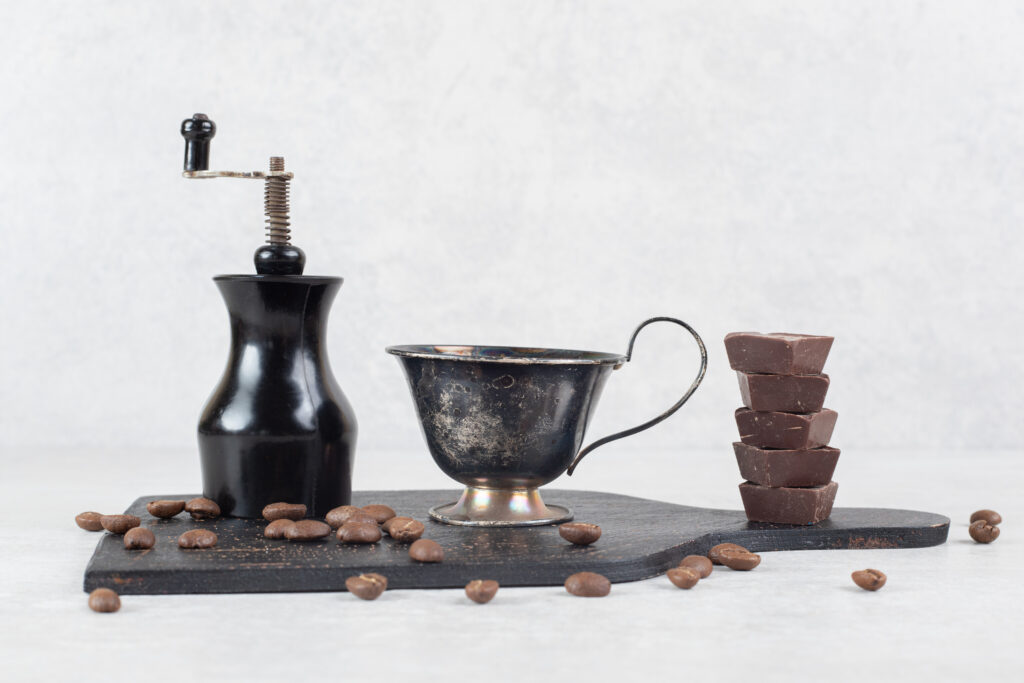
Manual coffee grinders, also known as hand grinders, are a popular choice for those who appreciate simplicity and portability. They require no electricity and rely on a hand-crank mechanism to grind the beans.
Pros:
- Portable: Lightweight and compact, manual grinders are perfect for travelers or outdoor enthusiasts.
- Quiet Operation: Manual grinders run more silently than electric ones.
- Affordable: They are generally more affordable than electric burr grinders.
Cons:
- Effort Required: Grinding coffee manually can be time-consuming and labor-intensive, especially for larger quantities.
- Limited Grind Settings: Some manual grinders have fewer grind size options compared to electric models.
Best For: Manual grinders are suitable for small-batch brewing methods like pour-over, Aeropress, or French press.
4) Smart Coffee Grinders:

Smart coffee grinders are the latest innovation in the coffee world. These coffee grinder types are equipped with Bluetooth or Wi-Fi connectivity, allowing you to control them via a smartphone app.
Pros:
- Convenience: You can customize grind settings and start grinding remotely with just a tap on your phone.
- Consistency: High-end smart grinders often use burr technology for precise grinding.
- Customization: Apps allow you to save settings for different brewing methods, making it easier to switch between espresso, drip coffee, and more.
Cons:
- Expensive: Smart grinders are among the most expensive options on the market.
- Learning Curve: Setting up and using the app may take some time to get used to.
Best For: Tech-savvy coffee lovers who want the convenience of controlling their grinder from their smartphone.
5) Specialty Grinders:
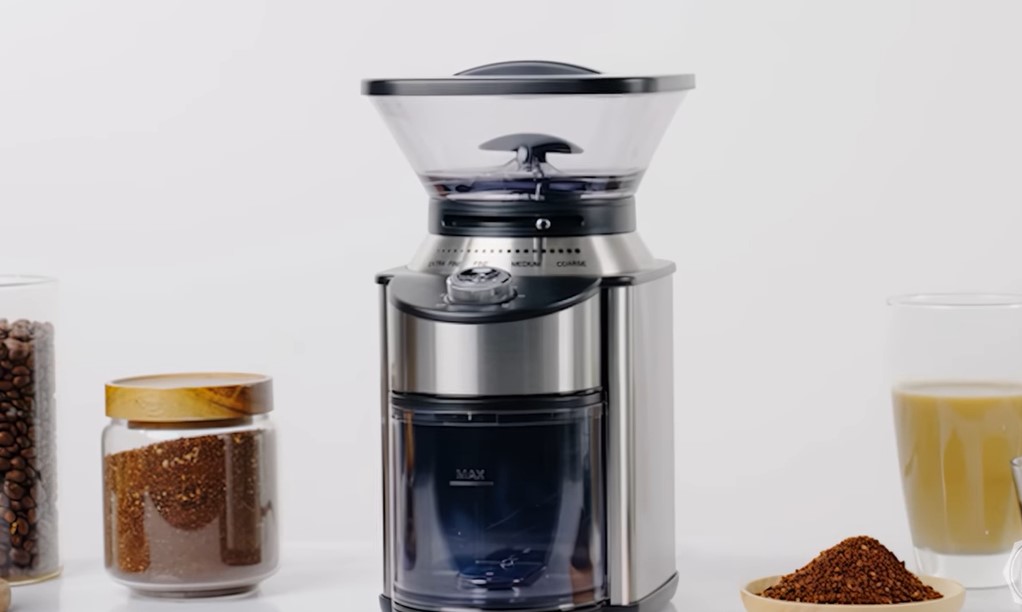
In addition to the main types of grinders mentioned above, there are specialty grinders designed for specific brewing methods, such as Turkish coffee or cold brew. These grinders offer unique features tailored to the requirements of these methods.
1) Turkish Coffee Grinders:
- These coffee grinder types produce an ultra-fine grind required for traditional Turkish coffee.
- Typically manual, they have a unique design that reflects the rich culture of Turkish coffee preparation.
2) Cold Brew Grinders:
- These grinders focus on coarse grind sizes ideal for steeping coffee over an extended period.
- Often burr-based, they ensure consistency for optimal flavor extraction.
How to Choose the Right Coffee Grinder
Take into account the following elements while selecting a coffee grinder:
1) Brewing Method:
Match the coffee grinder types to your preferred brewing method. For example, a burr grinder is ideal for espresso, while a blade grinder works well for drip coffee.
2) Budget:
Determine how much you’re willing to spend. While burr grinders are more expensive, they offer better results in the long run.
3) Grind Settings:
Look for a grinder with adjustable grind settings if you use multiple brewing methods.
4) Size and Portability:
Consider your kitchen space and whether you need a portable grinder for travel.
5) Ease of Cleaning:
Opt for a grinder that’s easy to clean and maintain to ensure consistent performance.
Conclusion
Exploring different coffee grinder types is a rewarding journey for any coffee enthusiast. Each type has its unique advantages and drawbacks, catering to various preferences and brewing methods. Whether you choose a blade grinder, burr grinder, manual grinder, or smart grinder, the key is to select one that aligns with your coffee-making habits and taste preferences. By investing in the right coffee grinder, you’ll unlock the full potential of your coffee beans and enjoy a superior cup of coffee every time.